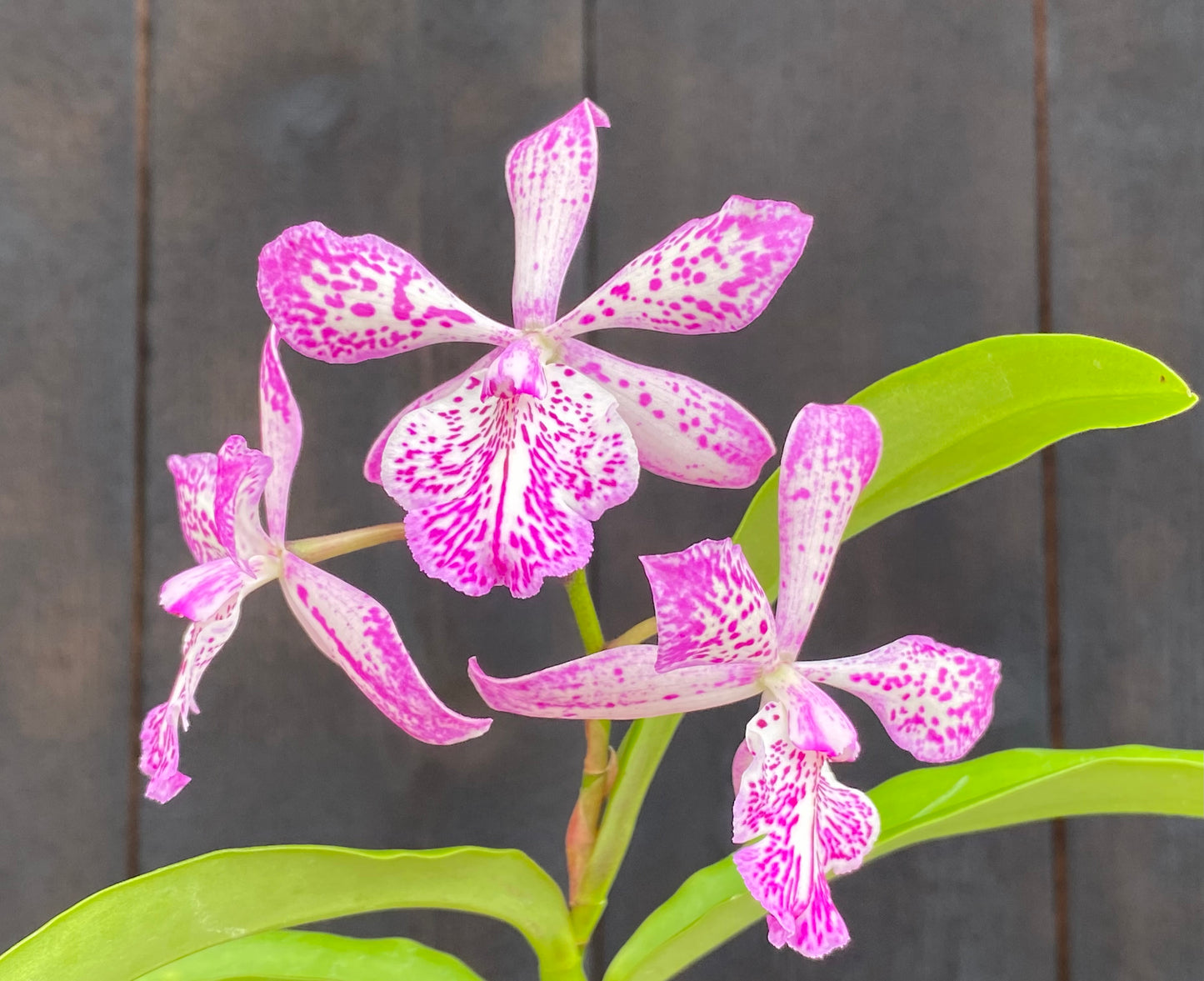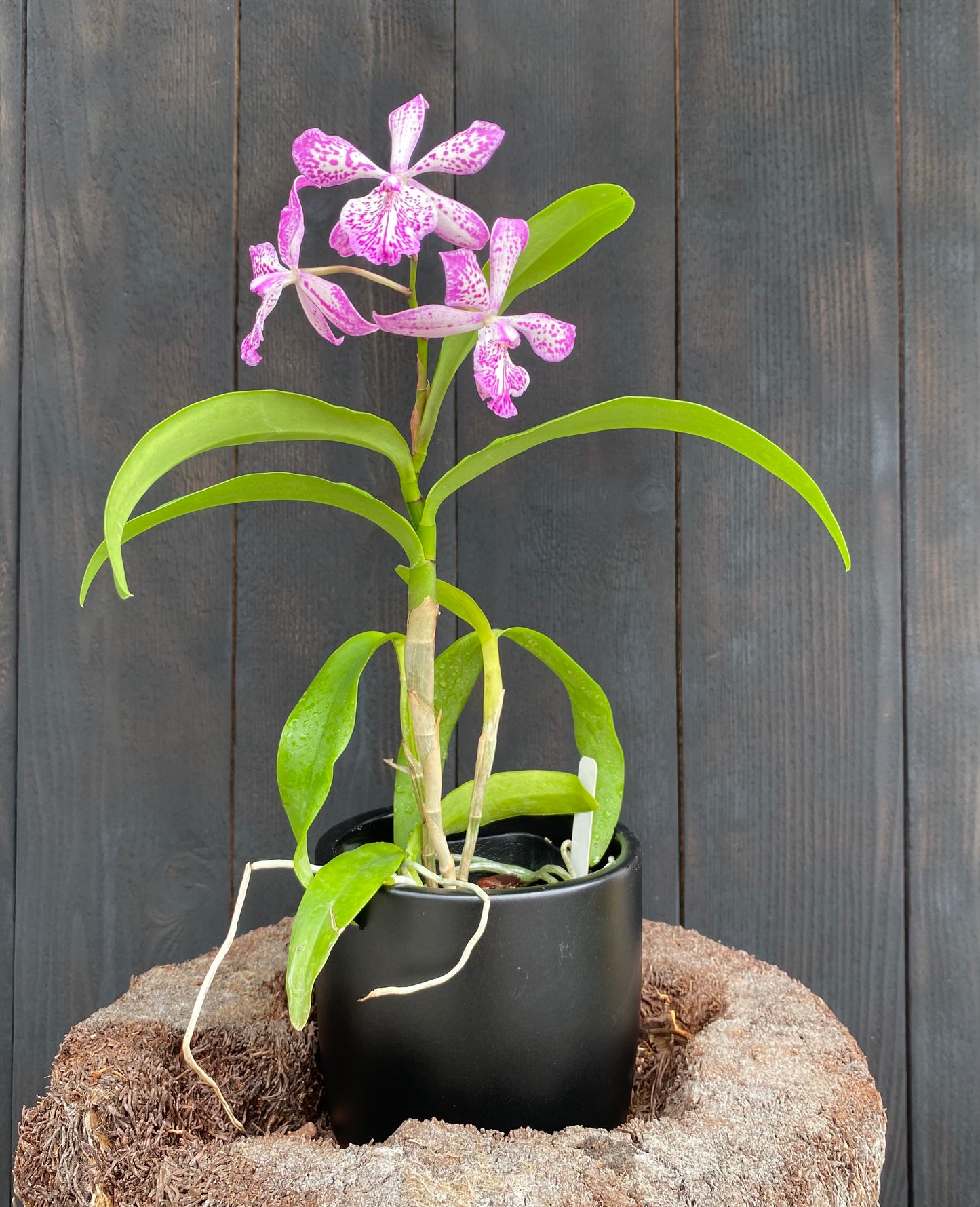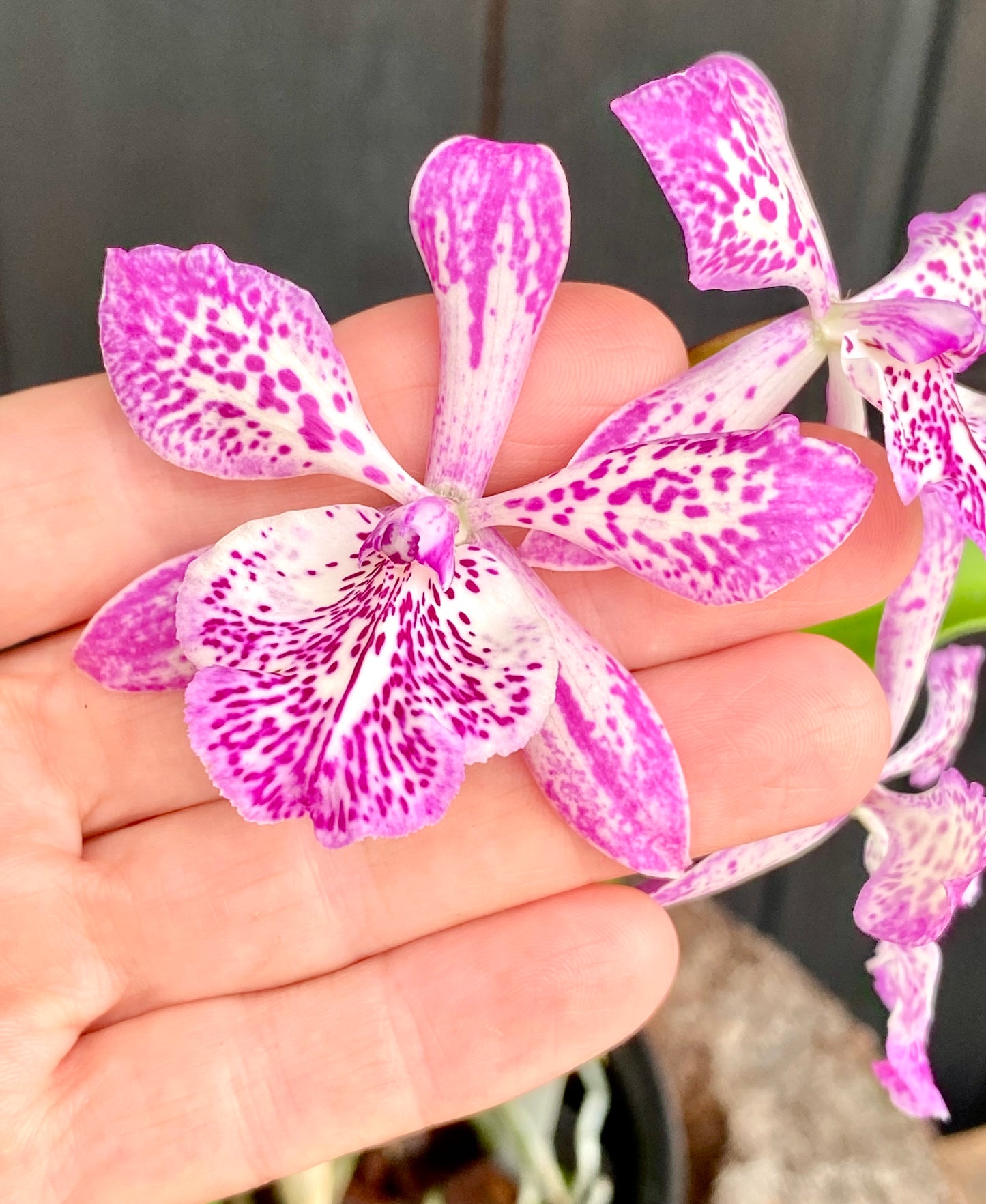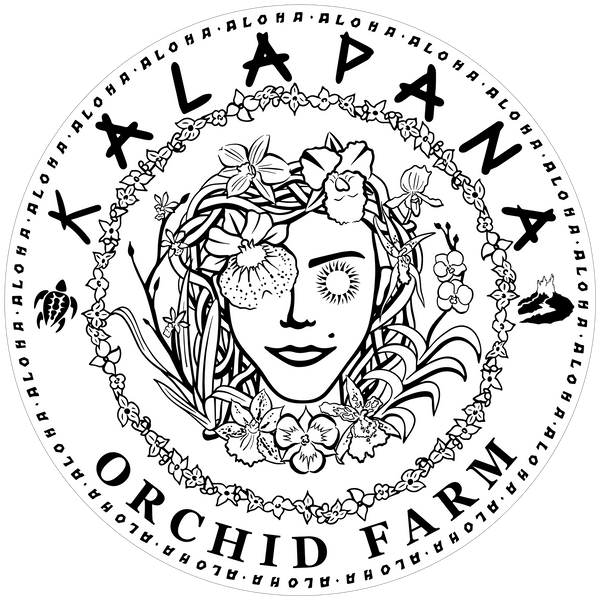Kalapana Orchid Farm
Tuckerara (Tuck.) Hilo Adventure 'Pinkie'
Tuckerara (Tuck.) Hilo Adventure 'Pinkie'
Couldn't load pickup availability
Tuckerara Hilo Adventure 'Pinkie' is quite the family reunion in a pot. This hybrid’s story begins with its parents, Diacattleya Snowflake and Cattleya Penny Kuroda. When you start pulling at those genealogical threads, you find yourself on a journey through the mountains and coastal forests of Central and South America.
The grandparent Diacm. bicornutum (now properly Caularthron bicornutum) hails from places like Trinidad and Venezuela, often found growing on trees in bright coastal sun. This ancestor is responsible for the waxy substance of the flowers and the tendency to produce a wonderful cluster of blooms. The other side of the family is a who's who of classic Cattleya species: C. harrisoniana and C. guttata from Brazil bring warmth tolerance and substance; C. trianae, the national flower of Colombia, lends its full shape and winter-blooming habit; and legends like C. dowiana from Costa Rica contribute that stunning yellow to the lip. It's a genetic melting pot that brings together the best of many worlds.
The 'Pinkie' cultivar presents charming, star-shaped flowers that are about 3.5 in. across. They are a delightful shell-pink to soft lavender, with petals and sepals that have a heavy, waxy texture, ensuring they last for a good long while. The lip is the real conversation piece, featuring a bright yellow throat that fades to white, all elegantly outlined and brushed with a vibrant magenta. The flowers are held proudly in a cluster atop an upright inflorescence and often carry a light, sweet fragrance during the day.
The plant itself is a robust sympodial grower, typical of the Cattleya alliance. It forms stout, club-shaped pseudobulbs that can reach about 8-10 in. in height. Each pseudobulb is topped by one or two (unifoliate or bifoliate) thick, leathery, oblong-elliptic leaves. The foliage is a rich green, providing a sturdy backdrop for the delicate-looking, yet tough, flowers. An established plant can become a very rewarding, multi-spike specimen.
Care Instructions
Light: Bright, indirect light is essential. An east-facing window or a shaded south-facing window is ideal. The leaves should be a light, apple green. Dark green leaves indicate insufficient light.
Water: Water thoroughly when the potting medium is approaching dryness. Allow the medium to dry out completely between waterings. Reduce watering frequency during the cooler winter months when the plant is not in active growth.
Temperature: Intermediate to warm temperatures are preferred. Daytime temperatures should be between 70-85°F, with a nighttime drop to 60-65°F. A 10-15°F drop in temperature at night is beneficial.
Humidity: Prefers 50-70% humidity. Good air circulation is critical to prevent fungal issues, especially in high humidity environments.
Potting Medium: Use a well-draining, coarse orchid mix. A blend of fir bark, charcoal, and perlite or lava rock works very well. This hybrid should be repotted every two to three years or when the potting medium begins to break down.
Share










